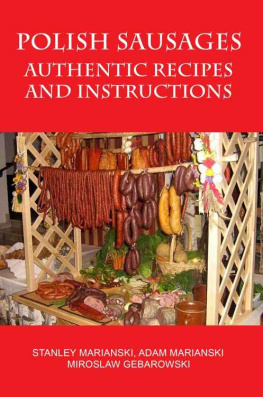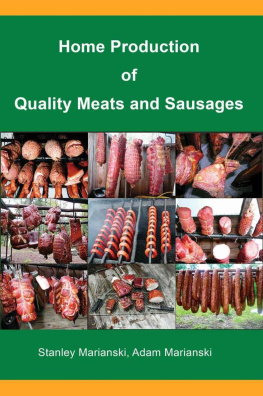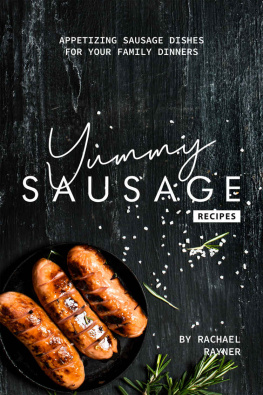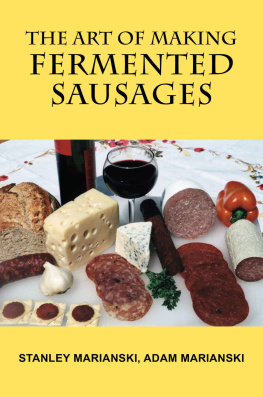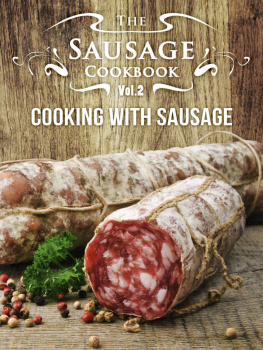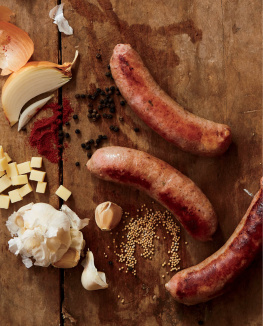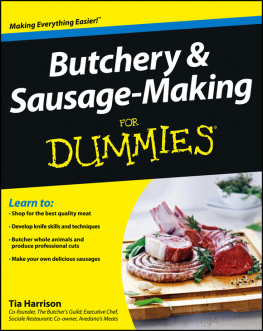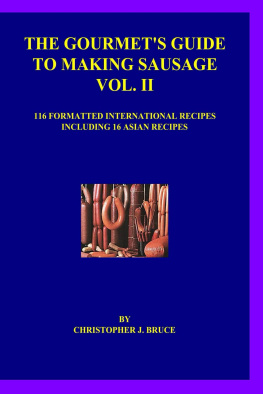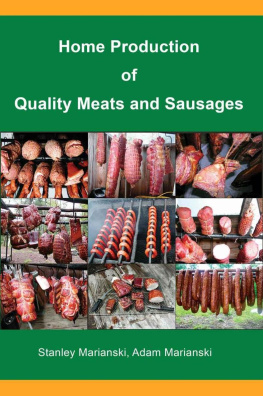
Copyright
Copyright 2009 by Bookmagic, LLC.
All rights reserved. This book may not be reproduced in any manner without the express written consent of the publisher, except of brief quotations in critical reviews and articles.
Polish Sausages, Authentic Recipes and Instructions
Stanley Marianski
Adam Marianski
Miroslaw Gebarowski
ISBN: 978-0-9904586-1-6
Bookmagic LLC.
www.bookmagic.com
Introduction
In November 2004, a Pole, Miroslaw Gebarowski, became so dissatisfied with the deteriorating state of Polish meat products that he decided to do something about it. He started a Polish forum on the Internet dedicated to the proper methods of meat preparation and the idea took off like a roller coaster. At that time Stanley Marianski lived in the USA and one day at a party he was arguing with his friends over some Polish sausage recipes. He jumped on the Internet and started to look for more information but the information he found in English was far from satisfactory. Finally in desperation he formed the question in Polish and imagine the surprise when he found his answer on the newly created forum.
That started the relationship that continues to this day. The Forum became so popular that in February 2005 its web presence was established www.wedlinydomowe.pl (Polish version) and the English site www.wedlinydomowe.com (presently www.meatsandsausages.com ) soon followed. At present, with 30,000 members, the Polish site is the biggest site of its kind in the world. The explanation for this incredible popularity of the site was the general dissatisfaction with the steady decline in quality, of once great meat products which can be traced to the collapse of the communist system in Poland and joining the European Common Market. The country opened up to Western Europe and this introduced new chemicals and preparation procedures which were designed to produce products in the fastest and cheapest way. Unfortunately, those changes resulted in processed meats of lower quality.
The home based sausage maker does not face those problems and for him the quality of his sausage is of the utmost importance, after all he and his family will eat it. Besides, for most people sausage making is a hobby from which they derive pleasure and the time spent is not a limiting factor. Having unlimited time and putting his heart into the process, he can create a product that is superior to the one available in the supermarket. In the pages that follow you will find everything about the production of sausages, covering topics like meat technology, curing, home style smoking, and even some old-fashioned tips and advice.
By carefully reading the material presented in this book and making different sausages, one can become an accomplished sausage maker in no time at all. He will be able to produce superior quality sausages and they will be made without chemicals. We can proudly say that this book represents over 500 years of sausage making, as well as all Polish sausage recipes. The following recipes are not just another invention of someone who likes to drink beer and make sausages. They are time proven recipes compiled, checked and enforced by the Polish Government Standards as applied to making meat products after World War II. With their vast resources and university educated meat professionals, the government became the final authority on the subject and took control of enforcing the standards.
Why did the Polish Government Regulate Sausages
The answer is as old as the world itself: the money. When the war ended Communism was forced on Poland which had been a free country before. That isolated the government from the rest of the world and prevented Poland from receiving any assistance from the West. The country was in ruin, some cities were 80 % damaged, every fifth person in the family was dead and the Polish currency zloty was not convertible. In other terms, nobody in the free world would accept that currency. The government was not able to purchase goods from other countries nor obtain loans or credits.
That forced the country to go back in time and start selling natural resources like coal, vodka, fruits and meat products. Those products had to be of an exceptional quality if they were to be accepted in the West and the Government spared no effort.
The Communistic doctrine says that everything belongs to the state and all independent meat plants were nationalized (became the property of the state). That also applied to sausage making plants and here is where the government excelled. The party members run the meat plants now and they spent half of their time drinking vodka and eating well. Being generally smart, well educated and opportunistic people they could easily determine which sausages tasted the best and they became good judges of quality. The Department of Meat Industry (Centralny Zarzd Przemysu Misnego) was established and those creative people came up with the great idea of standardizing Polish meat products. College educated meat technologists wrote great guides about making meat products which covered processes like meat aging, meat curing, smoking and cooking in great detail. The first 300 page long manual was written in 1958 and contained step by step instructions for making meat products and 70 sausages. The guide was for internal use only and the general public had no access to it. But at least the meat plant managers now had a set of instructions for making quality meat products and those norms were rigidly enforced by the government meat inspectors. This set of regulations was revised in 1964, 1974, 1978 and the years that followed. Even today the Polish Government publishes standards for making Polish sausages.
Unfortunately the latest norms are just a shadow of the detailed instructions from the past and basically they list the meat type and the list of ingredients that should go into a particular product. Today the meat industry consists of hundreds of independent plants and as there is no enforcement from the government, the standards are loosely obeyed. The present products are just echoes from the past.
Some may argue that todays products are healthier. Well, we agree with that but this is not a diet book. This is a book about making the best tasting products possible. Imitation butter is also healthier than butter but no respectable chef will take a risk of making creamy sauce with an imitation butter. He will be out of the door in a minute as there is no way to replace butters great flavor. The same applies to mayonnaise, cream cheese, milk and other products. There is a choice to be made between eating well and eating healthy.
During the war Mr. Goebels, the German Minister of Propaganda used to say that if the lie is repeated often enough it would become the truth. If you and your wife will start repeating every day that imitation mayonnaise or lean meat sausage taste better because it is healthy, most likely you will eventually and sincerely believe in it and for you it will become the truth. But your friends will hold a different opinion. We are not claiming that the sausages must always be made the way our recipes call for. We are simply offering those recipes with detailed instructions on making them so they will never be forgotten.
Why Did We Make Better Sausages Before?
The general consensus in Poland is that Polish meat products were absolutely the best in the years 1950 - 1990 and that statement will probably hold true for other European countries as well. We have the utmost respect for the latest in science and computers but we do think that making meat products might be an isolated case where the technology has lowered the taste of the product. Sausage making has been a dying art and there is almost no way to obtain quality products unless they are home made.
Next page
